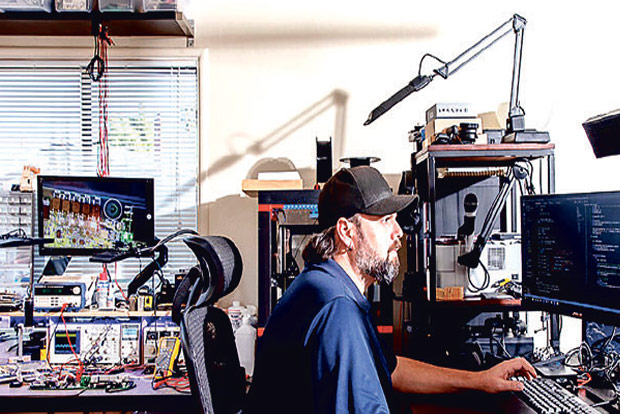Begin typing your search...
Pandemic Response: When start-ups set base inside the garage, or living room
It is the folksiest of Silicon Valley origin stories: Tech start-up makes it big after a wide-eyed entrepreneur builds a prototype in his garage. But Colin Wessells could never have imagined that a pandemic would force him back into the garage just to keep his company going.

Chennai
Wessells, 34, is one of the founders and the chief executive of Natron Energy, a start-up building a new kind of battery. In March, when social distancing orders shuttered his company’s offices in Santa Clara, Calif., he and his engineers could no longer use the lab where they tested the batteries. So he packed as much of the equipment as he could into a sport utility vehicle, drove it home and recreated part of the lab in his garage.
“It was only a fraction of the test equipment,” Wessells said. “But we could at least run some new experiments.” Designing and creating new technology — never easy tasks — have become far more difficult in the pandemic. This is particularly true for companies building batteries, computer chips, robots, self-driving cars and any other technology that involves more than software code. While many American workers can get by with a laptop and an internet connection, start-up engineers piecing together new kinds of hardware also need circuit boards, car parts, soldering irons, microscopes and, at the end of it all, an assembly line.
But Silicon Valley is not the home of ingenuity for nothing. When the pandemic hit, many start-up engineers in the area, like Wessells, moved their gear into their home garages so they could keep innovating. And if it wasn’t the garage, then it was the living room. “We moved millions of dollars of equipment just so people could continue working,” said Andrew Feldman, chief executive of Cerebras Systems, a start-up in Los Altos, Calif., that is building what may be the world’s largest computer chip. “It was the only way we could keep making these physical things.” To continue development of Cerebras’s dinner-plate-size chip even when the office was closed, one of Feldman’s engineers, Phil Hedges, turned his living room into a hardware lab. In mid-March, Hedges packed the 10-by-14-foot room with chips and circuit boards. There were also monitors, soldering irons, microscopes and oscilloscopes, which analyse the electrical signals that travel across the hardware.
To accommodate the gear, Hedges set up three folding tables. He put half the equipment on the tabletops and half on the floor below. There was so much heat from the computer hardware running day and night that he also set up massive “chillers” to keep the makeshift lab from getting too hot. Pumping a super-cold liquid through plastic tubes that snake around the hardware — “it looks kind of like bright blue Gatorade,” Hedges said — the chillers did what they were supposed to do. But they required extra attention, especially since Hedges and his family had just bought a new dog, and the puppy enjoyed chewing on the tubes. “If the dog had ever bitten through the tube, there would have been pumps shooting fluid everywhere,” he said. For his wife, the bigger problem was the never-ending whir of the chiller pumps. “That’s what drove her over the edge,” Hedges, 45, said.
In July, he moved some of the gear back into the Cerebras offices, where he now works on occasion, largely alone. Only seven other people are allowed in the 35,000-square-foot office, with most others still at home with their own gear. Like Cerebras, other tech start-ups are finding that they need to move their makeshift labs from one place to another — or have several jury-rigged labs going at the same time — to keep development going.
Cade Metz is a technology correspondent with NYT©2020
The New York Times
Visit news.dtnext.in to explore our interactive epaper!
Download the DT Next app for more exciting features!
Click here for iOS
Click here for Android
Next Story



